Microsoft 365/Azure
Microsoft 365/Azure Placement License Plans have two different policies available: Student and Employee.
Student License Plans and Exclusions
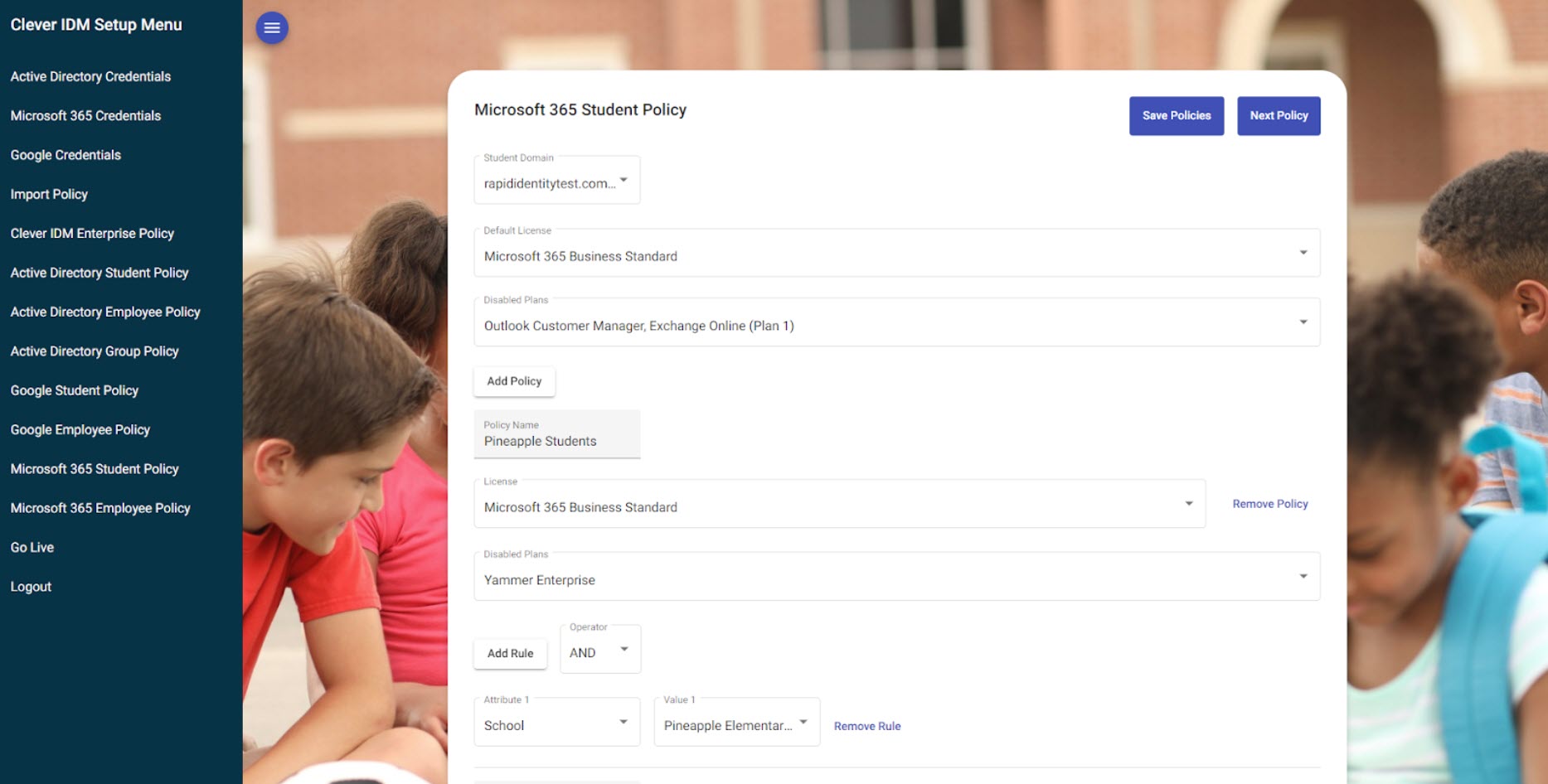 |
Similar to Google, Microsoft 365 has three initial settings that need to be defined:
Student Domain Selection is a drop-down menu that allows Administrators to specify the default domain suffix for the students in Microsoft 365. The values in the drop-down menu are queried directly from the 365 tenant.

Default License is the default license that will be applied to an account if the account does not match any of the criteria defined in a subsequent policy.
Disabled Plans is a listing of disabled services in which accounts will be restricted from accessing if they do not match the criteria defined in a subsequent policy.
The remaining configuration settings are where District Administrators can define granular licensing and disablement policies. There is no limit on the number of policies that can be defined; however, take care to define the policies to ensure that accounts are placed logically and there are no conflicting policies. In the event there is a conflict, the first defined policy will always be applied. If there is only one license type and the disabled plans are the same for all students, it is recommended that one policy be defined. In the event that either license types or disabled plans differ, multiple policies can be added.
To define a policy, perform the following steps:
Give it a Policy Name that is descriptive of the policy so that District Administrators can understand the policy's purpose.
Select an existing OU from the dropdown.
Note
The OU list is pulled directly from the District Google Domain.
Add one or more Rules. These can be combined by using an
ANDor anORto apply criteria to placement in the OU. For example, a rule can be defined as the following for students in Pineapple Elementary School: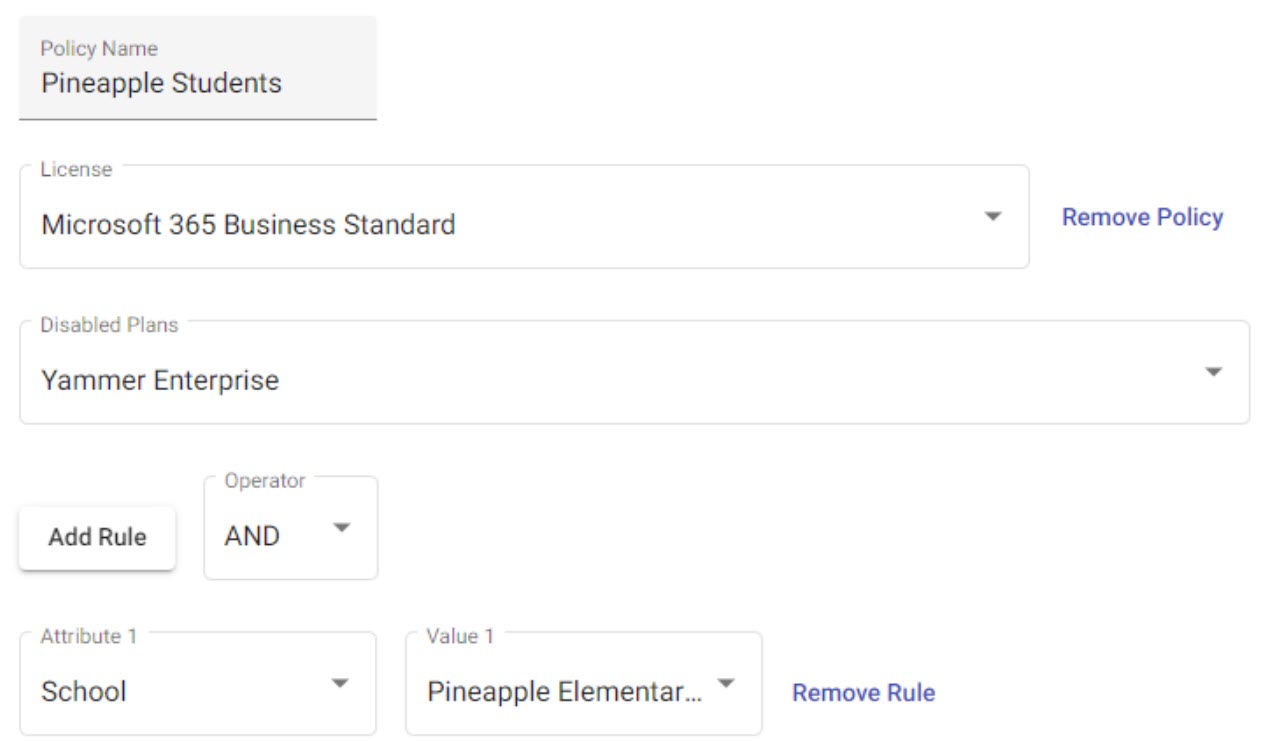
A rule's
ANDpolicies can be removed by clicking on the Remove Rule or Remove Policy links.Policies can be reordered by clicking on the arrow next to the policy name.

Once the policies are set, click the Save Policies button at the top of the configuration screen.

Policies can be adjusted or configured at any time, even after saving them.
Note
The system will not move forward if there are unsaved policies defined.
Employee License Plans and Exclusions
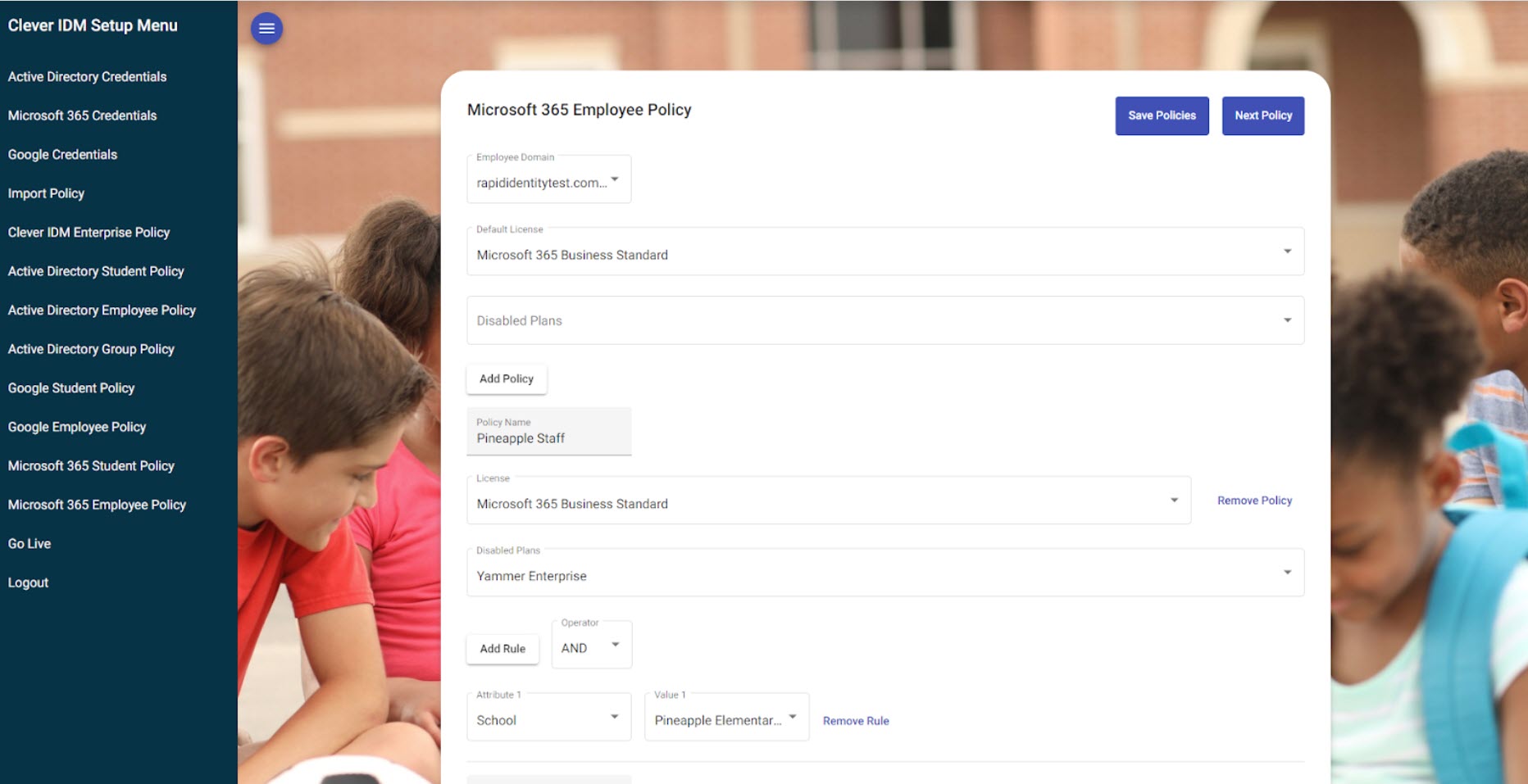 |
Similar to Google, Microsoft 365 has three initial settings that need to be defined:
Employee Domain Selection is a drop-down menu that allows Administrators to specify the default domain suffix for the students in Microsoft 365. The values in the drop-down menu are queried directly from the 365 tenant.
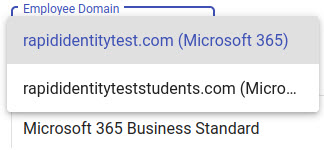
Default License is the default license that will be applied to an account if the account does not match any of the criteria defined in a subsequent policy.
Disabled Plans is a listing of disabled services in which accounts will be restricted from accessing if they do not match the criteria defined in a subsequent policy.
The remaining configuration settings are where District Administrators can define granular licensing and disablement policies. There is no limit on the number of policies that can be defined; however, take care to define the policies to ensure that accounts are placed logically and there are no conflicting policies. In the event there is a conflict, the first defined policy will always be applied. If there is only one license type and the disabled plans are the same for all students, it is recommended that one policy be defined. In the event that either license types or disabled plans differ, multiple policies can be added.
To define a policy, perform the following steps:
Give it a Policy Name that is descriptive of the policy so that District Administrators can understand the policy's purpose.
Select an existing OU from the dropdown.
Note
The OU list is pulled directly from the District Google Domain.
Add one or more Rules. These can be combined by using an
ANDor anORto apply criteria to placement in the OU. For example, a rule can be defined as the following for employees in Pineapple Elementary School: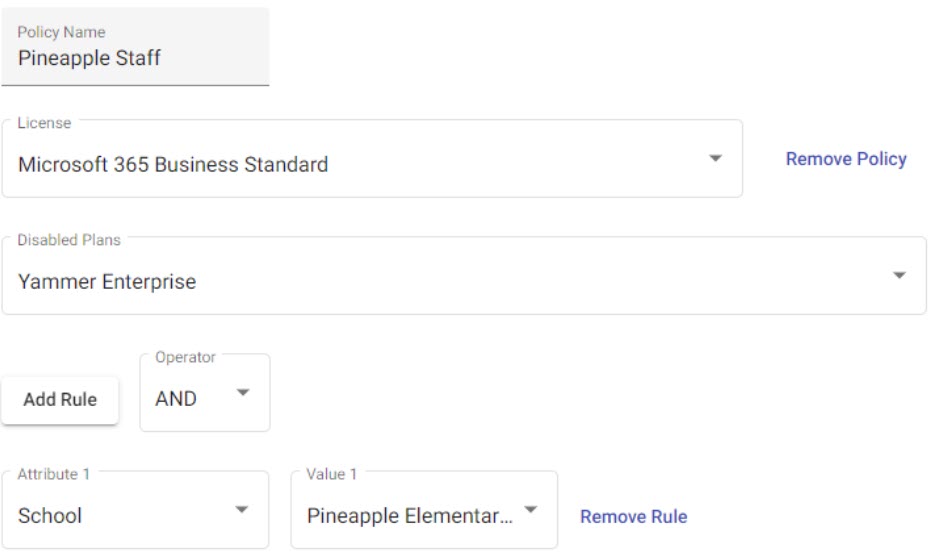
A rule's
ANDpolicies can be removed by clicking on the Remove Rule or Remove Policy links.Policies can be reordered by clicking on the arrow next to the policy name.

Once the policies are set, click the Save Policies button at the top of the configuration screen.

Policies can be adjusted or configured at any time, even after saving them.
Note
The system will not move forward if there are unsaved policies defined.